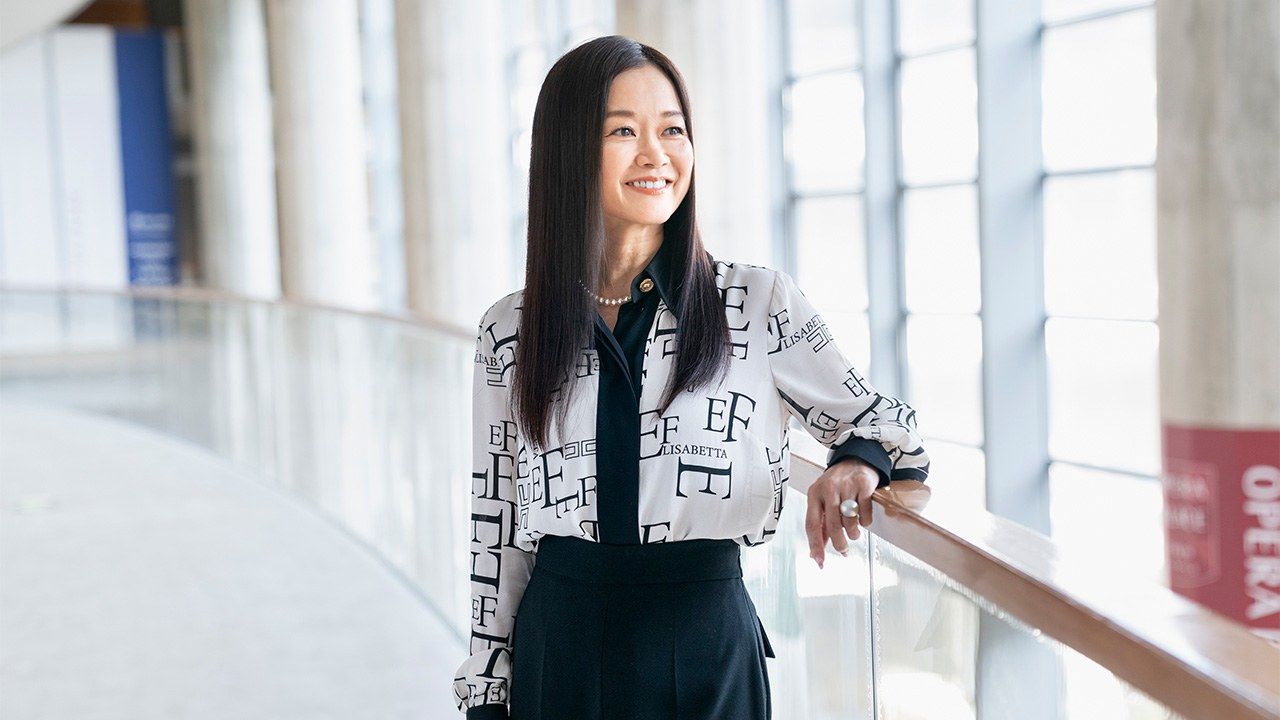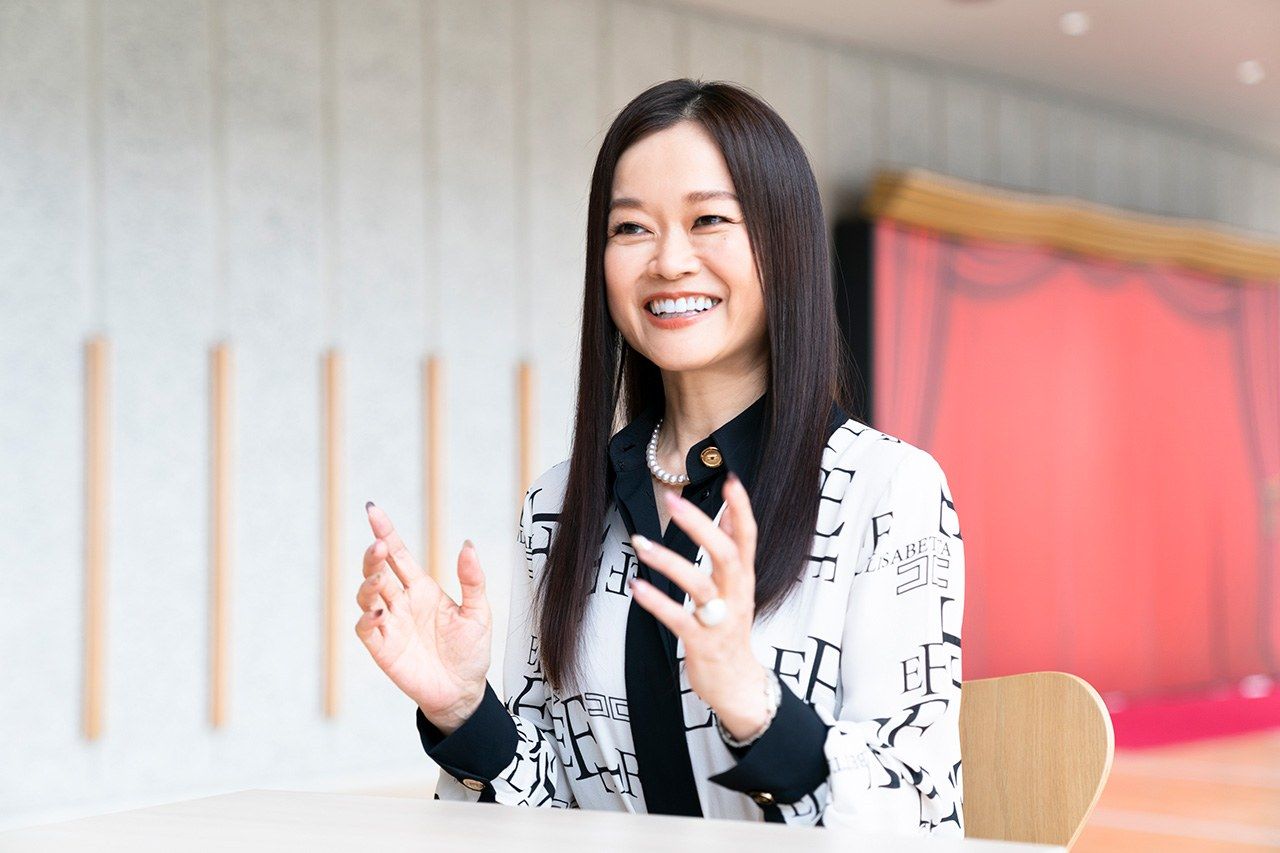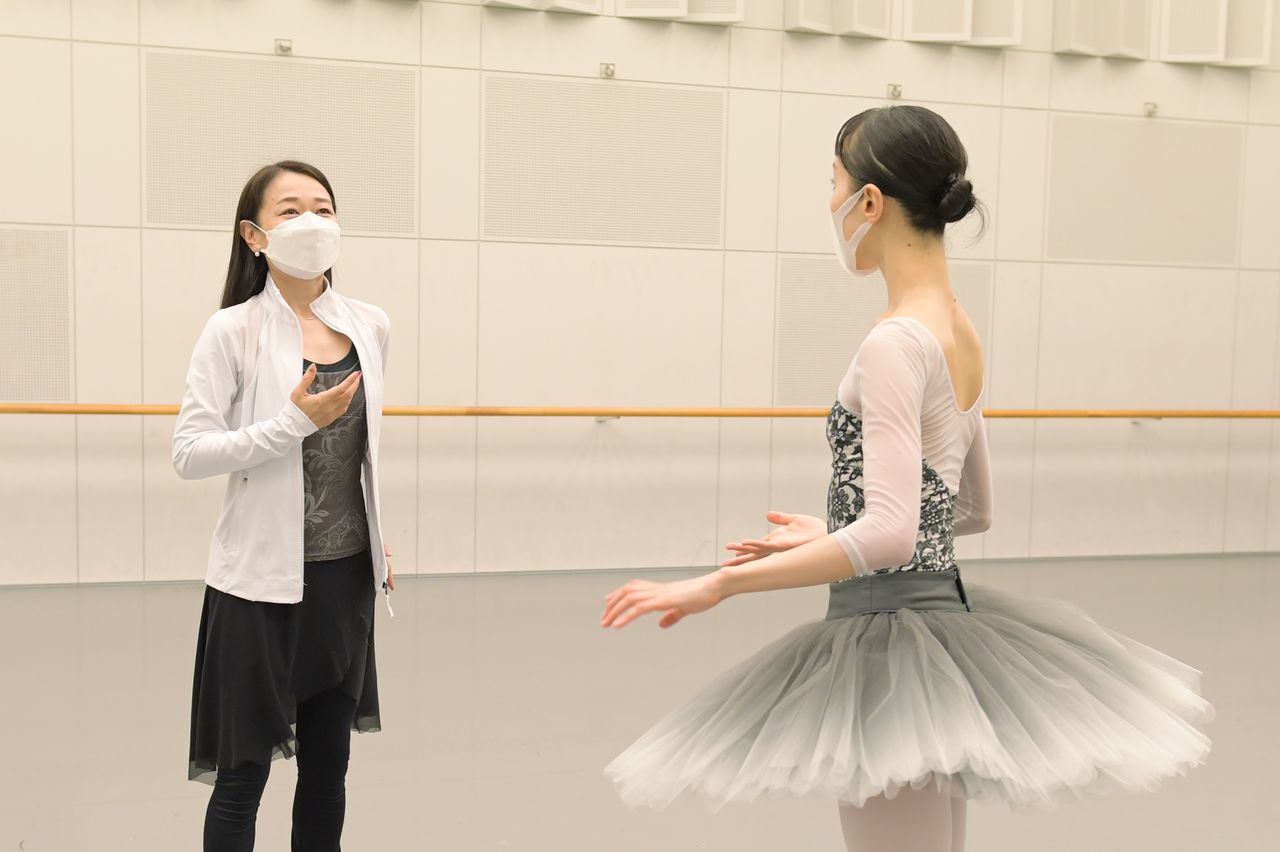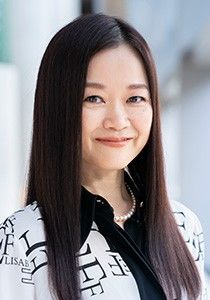
Ballet Dancer Turned Art Director Yoshida Miyako Takes On a New Challenge
- English
- 日本語
- 简体字
- 繁體字
- Français
- Español
- العربية
- Русский
A New Passion
“I always thought I could never feel really passionate about anything except dancing. It was a conviction I’d carried with me from childhood. But now, I’m starting to change my mind: I’m starting to think that I’ve found something I be even more passionate about than dancing.”
Until her retirement in 2019, Yoshida Miyako was one of the ballet world’s biggest stars, having spent decades at the very top of her profession, including 15 years as principal ballerina at the Royal Ballet, one of the world’s great ballet companies. Yoshida devoted long years to the grueling training expected of any top dancer, pushing herself to her physical limits to capture the imaginations of audiences around the world with a style of dancing that combined unrivaled precision with an apparently effortless natural lyricism. Now, she is embarking on the second act of her life in ballet.
In August 2019 she retired from her sparkling career as a dancer and in September 2020 took up a new position as Artistic Director of Ballet and Dance at the New National Theater Tokyo, Japan’s premier opera and ballet company.
“Part of me would have liked to go on dancing forever, but realistically I knew that my body was telling me it was time to stop. And when I looked at the way things were back home, I started to feel an urge to try and do something to help improve the situation of ballet in Japan. So when the New National Theater Tokyo approached me about becoming their new artistic director, the timing really couldn’t have been better.”
Taking On a New Role in the Midst of the Pandemic
Unfortunately, this new chapter opened in the middle of an unprecedented challenge in the shape of the coronavirus pandemic. Yoshida had planned to get her inaugural season off to a glittering start with the company’s first ever performance of Peter Wright’s version of Swan Lake. The choice of the Wright production, famous for its dramatic and ambitious interpretation of this timeless classic, made a perfect match with Yoshida’s ambitions: “I want the New National Theater to continue to be a company that performs classical ballet at the very top level. And in the years to come, I want to work more on nurturing the expressive powers of the dancers.” The choice of the Wright Swan Lake was a clear demonstration of the new director’s artistic vision.
A state of emergency was declared at the worst possible moment, just as the company was ready to begin rehearsals for the first performance of Yoshida’s inaugural season. For a while, the theater had to close its doors and the dancers were told to “stay home.” Guest coaches and others invited from overseas were no longer able to travel to Japan. Yoshida was forced to make a change in the programing, right from the very start of her tenure.
“I knew how difficult the job of an artistic director can be, and how heavy the responsibilities are—but the biggest difficulty came from a completely unexpected direction. No one imagined anything like this. However well prepared you might think you are, it’s just one surprise after another. Performances were canceled and we had to issue refunds, and box office revenue plummeted. The theater’s income was down about ¥1.3 billion compared to the previous fiscal year. There are lots of pieces we would really like to put on from an artistic point of view, but we’ve had to push them back for budgetary reasons. That’s the reality of the situation we’re in at the moment.”
But the pandemic also brought out the best in the theater’s supporters. “So many people supported us when they realized the seriousness of the situation we were facing. For me, as a newly appointed director just starting out in my new position, it was really a huge help and moral support.”

Yoshida Miyako, art director of ballet and dance, New National Theater Tokyo. (© Uwadaira Tsunebumi)
One example was an idea hatched with NHK Enterprises to stream rehearsals leading up to the opening night performances of Don Quixote, the ballet fitted into the schedule to replace Swan Lake.
“The online streaming idea came from a strong desire to support the theater through the hardships we were facing because of the pandemic. More than ever, we received warm messages of support and encouragement from ordinary ballet fans. People really rallied to lend their support. Thanks to all this support, we were able to find the strength to take on challenges that might never have occurred to us otherwise.”
Reaching Out to New Audiences Online
In fact, the ballet company of the New National Theater Tokyo stood out for the speed and ambition of its response to the pandemic. The management seemed to take a collective decision that the crisis should be regarded as an opportunity to try things that would otherwise have been impossible. A succession of ambitious programs astonished and delighted fans. One groundbreaking event was the decision in May 2021 to stage performances of Roland Petit’s Coppélia despite the declaration of yet another state of emergency in Tokyo.
When the state of emergency was announced and the government called on people to avoid unnecessary outings in an attempt to minimize the number of people out and about during the Golden Week holidays, the theater announced that all scheduled performances would be cancelled. But in fact, the theater took the remarkable decision to go ahead with the entire run of performances, played by four different casts across four days, without audiences—and made all the performances available online as free streams. The event met with a remarkable response from ballet fans. Word spread fast and the live streams attracted a cumulative audience of more than 167,000 people over the four days. The event also attracted a wide response on social media, with the hashtag #Coppelia trending on Japanese Twitter several times over the long weekend.
This was something new for the theater. Yoshida says the experience convinced her that “this is precisely the kind of thing we ought to be doing as a national theater. At a time when everyone is struggling, it’s our job to help by giving people an opportunity to forget about their worries and be happy for a few hours. That experience really brought it home to me that this was the role we should play.”
Artists and Athletes
The COVID-19 emergency brought out Yoshida’s style of strong leadership, built on a remarkably prompt and flexible decision-making ability, even in her first year as artistic director. At the same time, she was also beginning to work on bringing about changes elsewhere in more fundamental areas. In particular, she is determined to put a better system in place to help dancers look after themselves physically and get the care and attention they need to cope with the demanding physical side of their profession.
Ballet dancers are athletes as well as artists. It’s a calling that requires dancers to push their bodies to their very limits to convey beauty and emotion, and injuries are an inevitable part of the job. For this reason, most ballet companies in other countries around the world now offer a full range of specialist sports medicine facilities and employ large teams of coaches, trainers, and physical therapists to provide care and support for dancers when they are injured and help them to recover and get back on stage again as soon as possible. These things have become the norm in most companies worldwide, but not in Japan—and Yoshida admits that even the New National Theater Tokyo was no exception.
“In the past, everything was left up to the dancers themselves: care and rehabilitation following an injury, and even the decision about whether a dancer should rest or was ready to return to the stage. But that’s really not a good idea. Dancers are desperate to dance, and it’s not uncommon for people to hide an injury or try to push through when really they’d be better off resting. The essential thing is to make an accurate assessment of their physical condition and reach a decision based on that—and if that means taking a break, then you need to ensure they get the proper rest they need to make a full recovery.”
Yoshida says that in the end, this helps dancers to recover and is an essential part of allowing them to enjoy long and healthy careers.
“We’ve set up a hotline so we can link up with a hospital right away if anything happens, and a doctor accompanies the performers on tour for out-of-town performances. There’s much less anxiety than there used to be. This way, everyone can relax and concentrate on their jobs. We also run ongoing medical seminars for dancers and staff members, and have introduced training sessions to help improve core strength and balance.”

Yoshida, at left, shares some tips with Yonezawa Yui, principal dancer in the ballet corps of the New National Theater Tokyo.
One area where progress has been harder to achieve is the need for more rehearsal studios. Yoshida looks around the wide spaces of the theater and sighs: “We have all this space for performances, and yet we have only two studios where we can rehearse.
“I want to cast young dancers in new roles. That’s an important part of nurturing the next generation of dancers and encouraging them to develop their talent. But at the moment, the shortage of studio space means it’s impossible to secure enough rehearsal time. So in the end we have to give the major parts to people who’ve danced the role before. We have no other choice. Even one or two more studios would make it possible for us to give opportunities to more dancers, and dedicate more rehearsal time to help them get to grips with challenging new roles. We have so many talented young dancers who really deserve that time and those opportunities . . . it’s really a shame.”
But building additional rehearsal space would place a huge burden on the theater’s limited budget, and there are no easy solutions. Yoshida isn’t the type to give up easily. “However long it takes, I’m determined to keep searching until I find a way,” she says.
“These things take time. Even in Britain, it wasn’t the case that all these facilities were in place right from the start—not even at the Royal Ballet or at Sadler’s Wells [now the Birmingham Royal Ballet]. During the thirty years or so I spent in England, the company underwent a number of relocations, and there were several major projects to build new facilities. And little by little the ideal environment was put in place. I want to do the same thing here, over the next twenty or thirty years. It might not be finished during my tenure as artistic director. But that’s all right—I’m determined to do everything in my power to get as close to that ideal as we possibly can.”
Making Every Performance Count
Yoshida Miyako’s first season as artistic director closed with a series of performances of Raymonda in June 2021. Ballet lovers who attended were thrilled by the breathtaking performances. From the soloists to the group dances, every person on stage performed with wonderful precision and concentration. Every step, every pose seemed to be the result of careful deliberation. It was a distillation of everything that makes classical ballet such a wonderful art form, and the performances were rewarded with well-deserved, rapturous ovations.
“When I saw the final rehearsals for Raymonda, I knew the performances were going to go well. You could tell that the attitude of the coaching staff was totally different. One of the important things in ballet is to perform the basic positions and steps accurately. The coaches have to be patient and continually remind the dancers, right up to the final moment. The success of Raymonda was due to the efforts of the coaching staff, and by the dancers who listened and worked hard to follow that advice. It made me happy to see how strongly we were growing as a ballet company.”
Yoshida’s second year in charge started this September. The opening performances were of Peter Wright’s Swan Lake, one year on from their originally scheduled dates. As the curtain goes up on a new season, I asked Yoshida what kind of ballet company she wants the New National Theater Tokyo to become in the years to come. “I want this to be a company that people in Japan look at with pride and think, ‘This is our ballet.’ I always tell the dancers: if you disappoint an audience even once with a poor performance, those people will probably never attend again. Every single performance counts. Our job is to give our best and show our audience the very best every time we step on stage.
“We still don’t know when the pandemic will come to an end. All we can do for now is to keep doing our best at every single performance. We have to keep pressing on toward our goal, and never stop, whatever happens. That’s my aim as we start the new season: to keep working and to build up experience with everyone else in the company as we move forward toward our goal.”
(Originally published in Japanese. Banner photo: Star dancer turned director Yoshida Miyako working to transform the New National Theater Tokyo ballet. © Uwadaira Tsunebumi)
